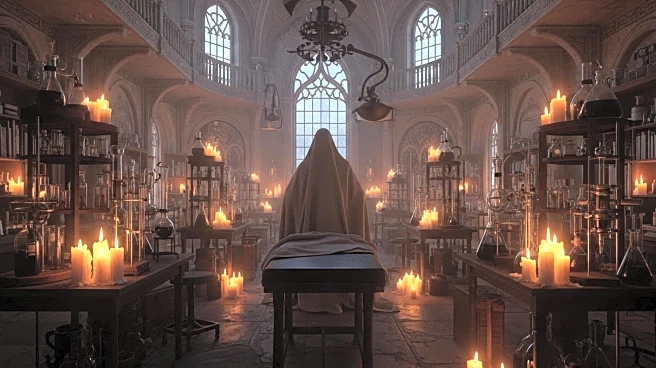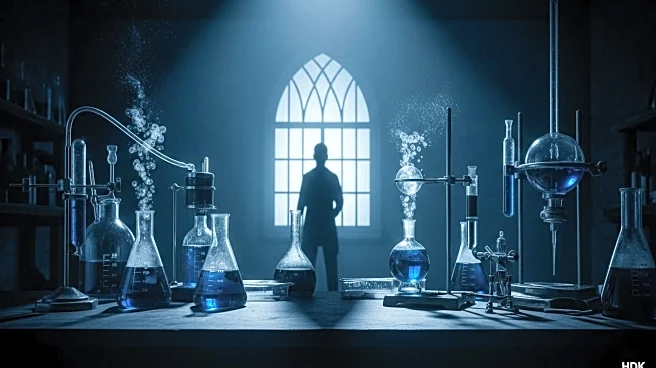What is the story about?
What's Happening?
Guillermo del Toro's adaptation of 'Frankenstein' has premiered at the Venice Film Festival, marking a significant milestone for the director who has long aspired to bring this project to life. The film, funded by Netflix, features Oscar Isaac as Victor Frankenstein and Jacob Elordi as the creature. Del Toro's version is ambitious, split into three parts, and aims to offer a fresh perspective by exploring the story from both Frankenstein's and the creature's viewpoints. The film emphasizes real sets over CGI, aligning with del Toro's belief in the authenticity of physical craftsmanship. Early reviews are mixed, with some critics praising its epic storytelling and others questioning its substance.
Why It's Important?
The release of 'Frankenstein' is significant for the film industry, showcasing Guillermo del Toro's unique approach to storytelling and his commitment to using real sets. This adaptation could influence future productions by highlighting the importance of physical settings in enhancing actor performances. The film's debut at a major festival like Venice underscores Netflix's growing influence in the film industry, as it continues to support high-profile projects. The adaptation also contributes to the ongoing conversation about the portrayal of classic literature in modern cinema, potentially impacting how future adaptations are approached.
What's Next?
Following its premiere, 'Frankenstein' is expected to be released to wider audiences, potentially sparking discussions about its thematic elements and del Toro's interpretation of the classic tale. The film may also be a contender in upcoming award seasons, given its ambitious scope and the director's previous successes. As audiences and critics continue to evaluate the film, it could lead to further exploration of classic stories through new lenses, encouraging filmmakers to innovate while respecting traditional narratives.
Beyond the Headlines
Del Toro's adaptation of 'Frankenstein' not only revisits a classic tale but also challenges the conventional use of CGI in filmmaking. By prioritizing real sets, the film may inspire a shift towards more tangible production methods, emphasizing the value of physical environments in storytelling. Additionally, the film's focus on the creature's perspective invites viewers to reconsider themes of empathy and humanity, potentially influencing cultural perceptions of monstrosity and identity.
AI Generated Content
Do you find this article useful?














